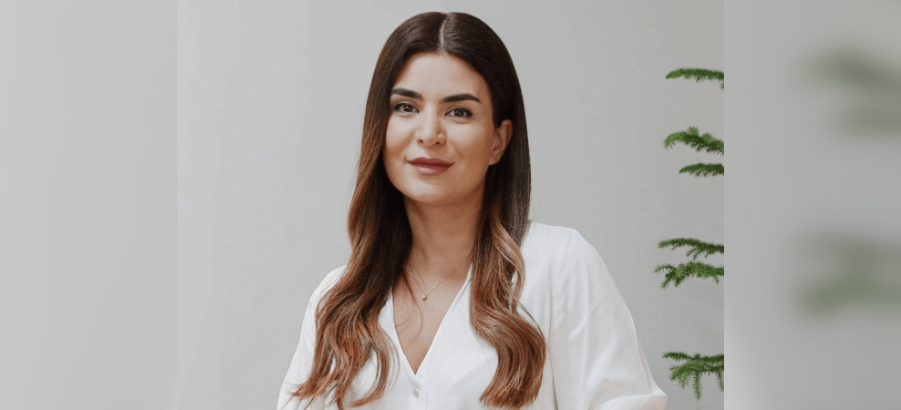Q&A: Joelle Saab, Recycling and Treatment Director, Dulsco Environment
08 July, 2025
With Dubai set to close all landfills by 2027 and achieve ‘zero waste to landfill’ by 2030, how is Dulsco Environment scaling up its existing facilities to handle the increased volumes?
In line with Dubai’s sustainability goals, operations across our key waste management assets including the Refuse-Derived Fuel (RDF) plant, Materials Recovery Facility (MRF), Construction & Demolition (C&D) Waste Recycling Plants, and Liquid Waste Treatment Facility are all well equipped to support the government strategy.
We are fully aligned with the UAE’s Net Zero 2050 initiative, with all our operations focused on resource recovery, recycling, treatment, and upcycling. In 2024 alone, our facilities handled over 1.2 million tonnes of waste and diverted 65% (800k tonnes) away from landfill, avoiding substantial CO₂ emissions.
Through advanced sorting and processing, we recover valuable resources such as recycled aggregates, sub-base, sand, aluminium, plastics, paper, and glass, ensuring materials are looped back into the economy. In addition, we recover furnace oil and treat liquid waste for reuse.
As landfill closures accelerate, we remain focused on achieving landfill diversion and ensure that waste streams are transformed into valuable, reusable resources.
What’s Dulsco Environment’s current processing capacity and what expansions are planned to address future waste volumes?
At present, our MRF processes over 80,000 tonnes of dry mixed recyclables annually and can recover more than 36 distinct material types, playing a critical role in reducing landfill dependence and supporting circular supply chains. Over the next two years, we expect an increase in the capacity of this plant.
At the Dulsco Environment’s C&D Waste Recycling Plants, which are operated in partnership with the Ministry of Climate Change and Environment and the Ministry of Presidential Affairs, up to 93% of C&D waste from landfills are being recycled and diverted. These facilities produce high-quality recycled aggregates, sub-base, and sand, contributing to compliance with federal directives mandating the use of up to 40% recycled material in construction projects.
In order to meet future volumes, we are actively working on forging partnerships, exploring new locations for facility expansion and investing in next-generation recycling technologies to drive long-term scalability and resilience across our operations.
What innovations or technologies are Dulsco implementing to maximize landfill diversion and convert waste into RDF, compost, and recovered material, especially ahead of the 2027 landfill ban?
We’ve been leveraging a suite of advanced technologies to drive landfill diversion and material recovery. At our MRF located in Ras Al khor, Dubai, we use advance sorting systems to optimize recycling efficiency and reduce contamination.
Our RDF facility located in DIC, Dubai, employs advanced pre-treatment, shredding, and drying technologies to convert waste into high-calorific fuel. This refuse-derived fuel serves as a cleaner alternative to coal and natural gas and is used to power cement kilns and industrial facilities contributing to reduced carbon emissions and energy diversification.
We are also looking at adopting other AI-driven technologies and innovations that will reshape the sector by increasing efficiency and enabling more materials to be reused or upcycled.
Additionally, we are continuously exploring other alternatives, which will be critical to meeting the 2027 landfill ban while promoting a circular, low-carbon economy.
With COP28 targets showing a 90% diversion rate from landfill at the event, how are those learnings being applied to scale city‑wide operations as landfill access phases out?
Our team played a central role in achieving the landmark 90%+ landfill diversion rate at COP28 and Expo 2020 before that, where we served as the official waste management partner. These milestones now serve as blueprints for broader city-wide implementation. The strategies deployed such as source segregation, real-time waste tracking, decentralized waste treatment solutions, just-in-time logistics, and comprehensive post-event material recovery are well-suited for integration into urban waste management systems across the UAE.
We are actively collaborating with municipalities as well as residential and commercial communities to replicate these best practices at scale. This includes setting up dedicated smart segregation stations for different waste streams and arranging for efficient waste collection done considering route optimisation. In parallel, we’re rolling out education campaigns to raise awareness among residents and businesses about the importance of proper segregation and responsible waste disposal.
To further promote reuse and circularity, Dulsco Environment has also launched ‘The New Old and Reloved’, an Emirati brand born from the intersection of recycling and innovation. Through this initiative, we upcycle discarded materials such as barrels and scrap waste into distinctive products, including furniture, décor, and memorabilia. This initiative gives waste a second life and showcases how sustainability can be both practical and creative with products sold online on the website.
As Dubai transitions to waste-to-energy models like Warsan’s WTE plant, how is Dulsco collaborating with government and third-party energy partners to integrate recovered fuel into the broader energy ecosystem?
We are closely collaborating with government entities and private sector energy partners to align RDF production with national waste-to-energy objectives. Our RDF is engineered to meet strict calorific and environmental standards, making it a reliable alternative fuel source for facilities such as the cement industries and other energy intensive sectors.
We’re also contributing to Warsan’s WTE plant by providing the right waste to be treated at the facility and avoiding diversion to landfill. These efforts support the UAE’s decarbonization strategy and help embed circularity in both waste management and energy generation.
With landfill closures accelerating, how is Dulsco partnering with municipalities and private clients to equip them with waste segregation, transport, recycling, and diversion capabilities?
We are working hand-in-hand with municipalities, developers, and corporate clients to embed circularity at every stage of waste generation. We also provide support with customized waste management solutions including colour coded bins, onsite training, tech-enabled collection vehicles, and digital reporting dashboards that track segregation performance in real time.
For industrial and commercial clients, we also provide end-to-end support from auditing waste streams to designing recycling programs and ensuring compliance with UAE sustainability regulations.
At present, we’re working with leading government entities including the Ministry of Climate Change and Environment (MOCCAE), Dubai Municipality, Majra, and the Dubai Chamber ESG Label to help raise industry standards and support national sustainability agendas. Achieving a 90% score in the Environment section of the EcoVadis Sustainability Assessment reaffirm our commitment to environmental excellence.
Moreover, we’re playing a role in policy developments supporting the municipality and ministries by providing data and practices from our experience in the field.
Our goal is to empower every stakeholder to meet landfill diversion targets and play an active role in Dubai’s zero-waste future.




